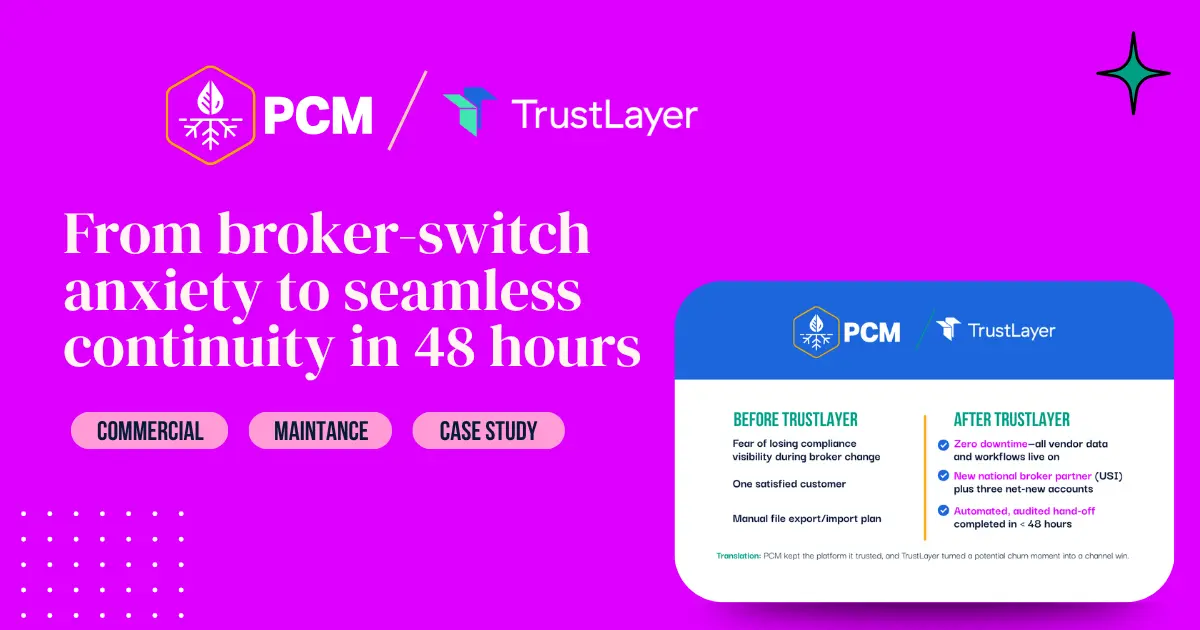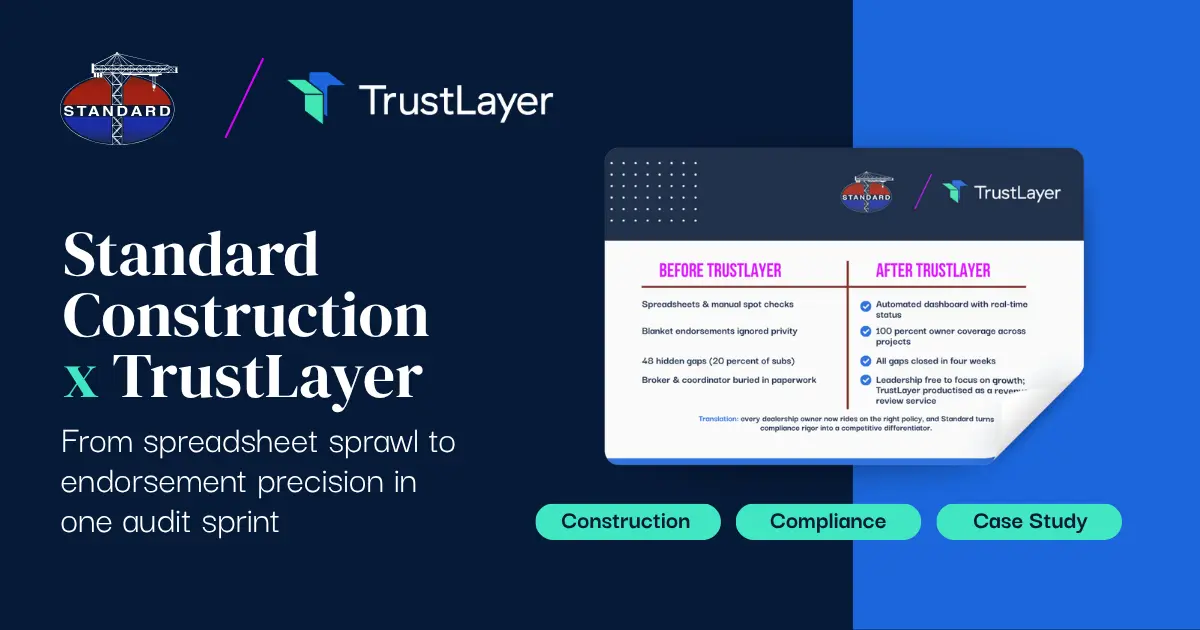The Difference Between Policy Holder, Certificate Holder, and Additional Insured

Understanding the nuances of insurance terminology can be complex, particularly for policyholders, when it comes to the roles of the various parties involved in a policy. Among the most commonly referenced terms are "policy holder," "certificate holder," and "additional insured." Each plays a distinct role in the insurance landscape, and grasping these differences is crucial for anyone navigating the world of insurance.
What is a Policy Holder?
The policyholder is the individual or entity that owns an insurance policy. This person or organization is responsible for paying the premiums and has the authority to make changes to the policy, such as updating coverage limits or adding additional insured parties. Essentially, the policyholder is the primary party in an insurance contract.
In most cases, the policyholder is also the one who files claims and receives the benefits of the policy. For example, if a homeowner has a property insurance policy, they will be the policyholder and will be the one to file a claim in the event of damage to their home. This role is crucial, as the policyholder's actions directly influence the effectiveness of the insurance coverage during times of need.
Understanding the nuances of being a policyholder can empower individuals and organizations to make informed decisions about their insurance needs. For instance, a policyholder may choose to bundle multiple insurance policies, such as auto and home insurance, with the same provider to receive discounts. This not only simplifies management but can also lead to significant long-term savings. Additionally, policyholders should regularly review their coverage to ensure it aligns with their current circumstances, such as changes in property value or personal assets.
Responsibilities of a Policy Holder
Being a policyholder comes with a set of responsibilities. The most significant obligation is to pay premiums on time to ensure that the coverage remains active. Failure to do so can result in a lapse of coverage, potentially leading to financial loss in the event of a claim. Furthermore, policyholders should keep track of payment schedules and set reminders to avoid any unintentional lapses that could leave them vulnerable.
Additionally, policyholders must provide accurate information to the insurance company when applying for a policy. Misrepresentation or failure to disclose essential details can result in denied claims or policy cancellation. Policyholders should maintain open lines of communication with their insurance providers, updating them on any significant life changes, such as marriage, relocation, or the acquisition of new assets, which may affect their coverage needs.
Rights of a Policy Holder
Policyholders have certain rights that protect them in their dealings with insurance companies. They have the right to understand the terms of their policy, including what is covered and what is excluded. Furthermore, they can expect fair treatment when filing claims and have the right to appeal decisions made by the insurer. This transparency is vital, as it enables policyholders to navigate the complexities of their insurance contracts with confidence.
Moreover, policyholders can modify their policies as their needs change, whether that means increasing coverage limits, adding endorsements, or even canceling the policy altogether if it no longer meets their requirements. It's also worth noting that many insurance companies offer policyholders the opportunity to review their coverage annually, which can be an excellent chance to reassess their needs and ensure they are not underinsured or overpaying for unnecessary coverage. By staying proactive and informed, policyholders can maximize the benefits of their insurance policies while safeguarding their financial well-being.
Understanding Certificate Holders
A certificate holder is a party that receives a certificate of insurance, which serves as proof that an insurance policy exists. This certificate outlines the coverage provided and is often required by third parties, such as clients or vendors, to verify that an entity has the necessary insurance coverage in place.
Unlike the policyholder, a certificate holder does not own the insurance policy. Instead, they are simply provided with documentation that confirms the existence of coverage. This is particularly common in business transactions where one party wants assurance that the other has adequate insurance before entering into a contract.
Role of a Certificate Holder
The primary role of a certificate holder is to ensure that they are protected in the event of an error or incident. For instance, if a contractor is hired to perform work on a property, the property owner may request a certificate of insurance to ensure that the contractor has liability coverage. This way, if an accident occurs during the work, the property owner knows that there is insurance in place to cover potential damages.
It's important to note that being a certificate holder does not grant any rights to the policy itself. The certificate holder cannot file claims or make changes to the policy; they are simply a third party that benefits from the existence of the insurance coverage. This relationship is crucial in industries such as construction, where the risk of accidents is higher, and the financial implications of those accidents can be significant. By requiring a certificate of insurance, businesses can mitigate their risks and ensure that they are not left vulnerable in the event of unforeseen incidents.
Limitations of Certificate Holders
While certificate holders can verify that insurance coverage exists, they do not have the same protections as policyholders. For example, if a claim arises, the certificate holder cannot directly access the policy benefits. Their only recourse is to rely on the policyholder to fulfill their obligations under the insurance contract.
Additionally, the certificate of insurance may not provide comprehensive details about the policy. It typically summarizes coverage limits and exclusions, but does not serve as a complete representation of the policy's terms and conditions. Therefore, certificate holders should always request to see the full policy if they want to understand the coverage in detail. This is particularly important in complex transactions where specific risks may not be adequately covered by the general terms outlined in the certificate. Understanding the nuances of the policy can help certificate holders make informed decisions and negotiate better terms in their contracts.
Moreover, the certificate of insurance is often time-sensitive, reflecting the current status of the policy in effect. If the policy is canceled or lapses, the certificate may become invalid, leaving the certificate holder vulnerable to risk. Therefore, it is advisable for certificate holders to periodically verify the status of the insurance policy to ensure ongoing coverage. This vigilance is especially critical in industries where projects can span extended periods, and insurance needs may evolve. By maintaining open lines of communication with the policyholder, certificate holders can better safeguard their interests and ensure that they remain protected throughout their contractual relationship.
Exploring Additional Insureds
An additional insured is a person or entity that is added to an insurance policy, allowing them to receive coverage under that policy. This designation is often used in various business contracts, where one party requires another to add them as an additional insured to their policy. This can provide a layer of protection for the additional insured in case of claims related to the activities covered by the policy.
For example, if a company hires a subcontractor to perform work on a project, they may require the subcontractor to add them as an additional insured on their liability policy. This ensures that if a claim arises from the subcontractor's work, the company is protected under the subcontractor's insurance. This practice not only safeguards the hiring company but also fosters trust and accountability between the parties involved, as it reflects a commitment to shared responsibility for safety and risk management.
Benefits of Being an Additional Insured
Being designated as an additional insured comes with several advantages. Primarily, it provides coverage for claims that may arise from the policyholder's actions. This means that if a lawsuit is filed against the additional insured due to the policyholder's work, the insurance policy can cover legal fees and settlements. Additionally, this coverage can enhance the additional insured's standing in the eyes of clients and stakeholders, as it demonstrates a proactive approach to risk management.
This arrangement can be particularly beneficial in industries where risk is prevalent, such as construction or event planning. By being added as an additional insured, parties can mitigate their financial exposure and ensure they have some level of protection in case of unforeseen incidents. Furthermore, this status can also streamline the claims process, as the additional insured may not need to navigate the complexities of their insurance policy, relying instead on the policyholder's coverage to address claims swiftly and efficiently.
Limitations of Additional Insured Status
While being an additional insured provides certain protections, it is essential to understand the limitations of this status. Additional insureds typically do not have the same rights as policyholders. They cannot make changes to the policy or file claims independently; they must rely on the policyholder to manage the insurance coverage. This reliance can sometimes lead to complications, particularly if the policyholder is unresponsive or if disputes arise regarding the nature of the claim.
Moreover, the coverage provided to additional insureds may not be as comprehensive as that of the primary policyholder. Often, coverage is limited to specific incidents or activities related to the policyholder's operations. Therefore, additional insureds should carefully review the policy terms to understand the extent of their coverage. It is also advisable for additional insureds to maintain their insurance policies as a supplementary measure, ensuring that they have adequate protection for their unique risks and exposures that may not be covered under the primary policyholder's insurance. This dual-layered approach can provide a more robust safety net in an increasingly litigious environment.
Key Differences Between the Three Roles
Understanding the differences between policyholders, certificate holders, and additional insureds is crucial for anyone involved in insurance transactions. Each role serves a unique purpose and carries distinct rights and responsibilities.
Ownership and Control
The most significant difference lies in ownership and control. The policyholder owns the insurance policy and has the authority to make decisions regarding it. In contrast, certificate holders and additional insureds do not own the policy and have limited rights and responsibilities. Certificate holders merely receive proof of coverage, while additional insureds are granted specific protections under the policy. This distinction is crucial in commercial settings, where multiple parties may be involved in a single project. For instance, a contractor might hold the policy, while subcontractors are listed as additional insureds to ensure they are protected against certain liabilities arising from their work.
Rights and Responsibilities
Policyholders are responsible for maintaining the policy, paying premiums, and filing claims. They have the right to modify the policy and expect fair treatment from the insurer. Certificate holders, on the other hand, do not have any responsibilities regarding the policy itself; they simply need to verify coverage. This verification can be essential in situations where proof of insurance is required for contractual obligations, such as leasing agreements or construction contracts. Additional insureds have limited rights and responsibilities, usually related to specific activities covered by the policy. Their inclusion in the policy can provide peace of mind, knowing they are safeguarded against certain risks. Still, they need to understand the limitations of their coverage to avoid potential disputes in the future.
Claims Process
When it comes to filing claims, the policyholder is the primary party responsible for doing so. Certificate holders cannot file claims, while additional insureds can only file claims under the terms specified in the policy. This distinction is crucial, as it highlights the varying levels of involvement and protection each party has in the insurance process. For example, if an incident occurs that results in a claim, the policyholder must navigate the claims process, which typically involves providing documentation and cooperating with the insurer's investigation. Additional insureds, while they can benefit from the coverage, may find themselves relying on the policyholder to advocate for their interests, which can complicate matters if the relationship between the parties is strained. Understanding these dynamics is essential for all involved to ensure that their rights are protected and that they are adequately covered in the event of a claim.
Conclusion
In the world of insurance, understanding the roles of policyholders, certificate holders, and additional insureds is essential for making informed decisions. Each role comes with its own set of rights, responsibilities, and limitations, which can significantly impact how claims are handled and coverage is provided.
By recognizing these differences, individuals and businesses can better navigate their insurance needs, ensuring they have the appropriate coverage in place and understand their position within the insurance framework. Whether you are a policyholder, a certificate holder, or an additional insured, being informed is the first step toward effective risk management.
Ultimately, insurance is about protection and peace of mind. Understanding these roles can help ensure that everyone involved is aware of their rights and responsibilities, leading to smoother transactions and better outcomes in times of need.
As you've learned, navigating the roles of policyholders, certificate holders, and additional insureds is a critical aspect of risk management. TrustLayer revolutionizes this process by offering a best-in-class Certificate of Insurance (COI) tracker, specifically designed for the modern risk manager. Our platform is trusted by hundreds of thousands of companies for its ability to automate the tedious tasks of tracking, verifying, and managing vendor documents. Say goodbye to the administrative burden of paper and phone calls, and embrace the efficiency of TrustLayer's innovative solution. If you're ready to transform your risk management practices and collaborate more effectively, set up a time to talk with our team and discover how TrustLayer can streamline your insurance verification process.
















